This project is something that I find inspirational because of the movements that it has and the way the colors are used to create depth in this piece. Linden Gledhill, the photographer of this piece, used high-speed cameras that reflected off the moving water which change the motions of the waves. The light that is reflected helps change the color of the waves. The vibrations were the cause in helping the wave patterns to shift, and depending on higher or lower the frequencies the more complicated the patterns turn out to be. I suppose they used the camera to be able to record the wave changing. The artist uses his sensibilities in this piece getting inspired by Michael Faraday’s study on Faraday Waves to be able to focus on the different shapes and colors that were formed through just the pattern of water forming on the surface through the effects of vibrations on it.
Category: LookingOutwards-03
LO: Computational Fabrication

I found Nadeem Haidary’s work In-Formed especially powerful because it introduces potentially foreign and far-away-seeming data through such a ubiquitous, intimate human ritual such as eating. By visualizing the data in the prongs of a fork, the designer makes the statistic real, tangible, unable to ignore. On his website, he actually asks the question, “what if this information crawled off the page and seeped into the products that surround us?” (Haidary). As one looks at, reflects on, and imagines what it might look like to eat with this fork, it makes the reality of different eating habits and access far more tangible to the viewer than a simple fact they might read or hear. Regarding the algorithm, I assume the craft involved researching the statistics of calorie consumption by country, and then using those number to determine the proportions between each prong for each country it represented. The creator’s artistic sensibilities are manifested in the form in that it shows his ability to communicate something in a very human, tangible, and accessible way, as good designers do.
Looking Outward – 03

A computational project that inspires me is an architectural project done by Thilo Frank called EKKO. This project is located in Denmark and is a continuous walkway that consists of 200 wooden frames that incrementally change dimensions to create a long and contorted structure. The structure was computational in its design as the exterior shape was shaped by keyframes and the computer filling in the frames in between. The design also incorporates microphones within the wood to record and playback the sounds of the people walking through the structure. This type of work is done with parametric modeling in which the set of processes to create design is laid out by the person and the computer interprets it in many different ways. The artists’ sensibilities manifest themselves in the experience that one has inside the structure and the elaborate design the artist laid out in order to give the user a feeling of what the artist senses.
https://www.dezeen.com/2012/10/29/ekko-installation-by-thilo-frank/
Looking Outwards: Computational Fabrication
I found the project of digital fabrication to design a bookshelf very appealing. It was done by using a Lamella system assembly integrated in freeform geometry to create a system of shelves that are interdependent on each other. It uses 5-axis CNC swarf cutting to maintain consistency for the surface at joints and the connecting points. I really like the flowing over all visual that is created by the rigid modular structure of the shelves. The irony within this is something that I really enjoy. It was done by the Ahtehha firm that used these shelves within a library that they were designing.
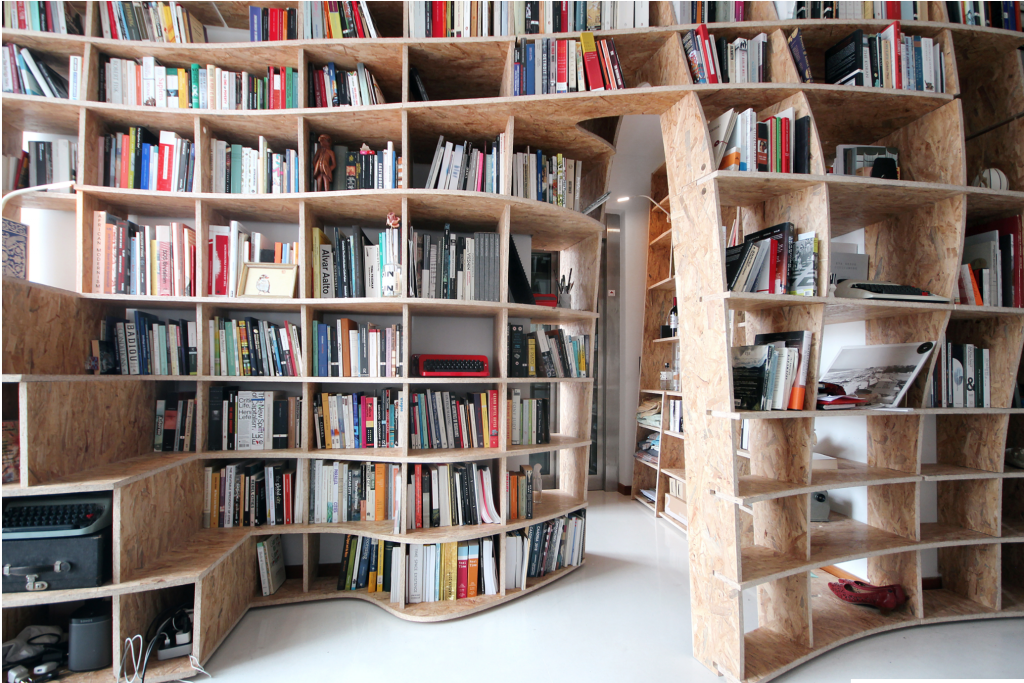
LO: Computational Fabrication
While looking through the different projects of digital fabrication, one specific project from Marius Watz caught my attention. I really admire Chainmail by Watz because it looked so complex I had to really look into it to see how it was made. When I looked carefully at the artwork, it was basically made out of many chains that were connected by hollow rectangles. I think it’s interesting how Watz created an artwork that looks very complex, but the artwork itself is just chains connected together. I suppose the artwork is a parametric object because it is made out of repetitive shapes. Watz’s artworks are mostly geometric shapes that repeat each other to create something very complex. I feel that Watz really captured his artistic sensibilities in this artwork because he repeats a simple rectangular shape to create a very organic shape. The artwork itself is very round, however, it is made out of rectangular shapes.

LookingOutwards-03
I love how this project is an intersection between an organic tree / physical origami and computer generated art. The structure is an interesting mix of structured and unstructured. Its shapes are relatively simple ellipses, but they’ve been stacked to look like a tree. Even without knowing that it’s supposed to be a tree, the shape is relatively clear. The design is super cool and futuristic! I wonder how much of the tree was computer generated / 3D printed and how much was made by hand. Since it’s origami, maybe some of it was made organically. I also have no idea what material may have been used. The creator does a great job blending generative art and traditional origami. The tree is very cool and futuristic, and I’d love to see other works by this artist.
^^The super cool tree :O
LO: Computational Fabrication
This digital fabrication piece photographed by Theresa Burger not only fascinates me because of its detail and interesting form, but on a broader scale, I really like how the digital fabrication is used as a piece of jewelry and accessory. I think that creating something with the purpose of it being worn and displayed, especially something that is 3D printed, is difficult because the artifact exists for many purposes and is functional, which I admire because of my interests in product design. Like any piece of art, these earrings are stylized and it is clear that the artist has a certain aesthetic. The use of color is very minimal and the form is repetitive in nature which speaks to the artists’ taste for simplicity and minimalism. I think that these earrings follow the rules of a parametric object in that values of a variable are changed and produce a generative design.
Artist: Theresa Burger
Year: 2011
Link: https://www.flickr.com/photos/tweebi/5679733977/in/photostream
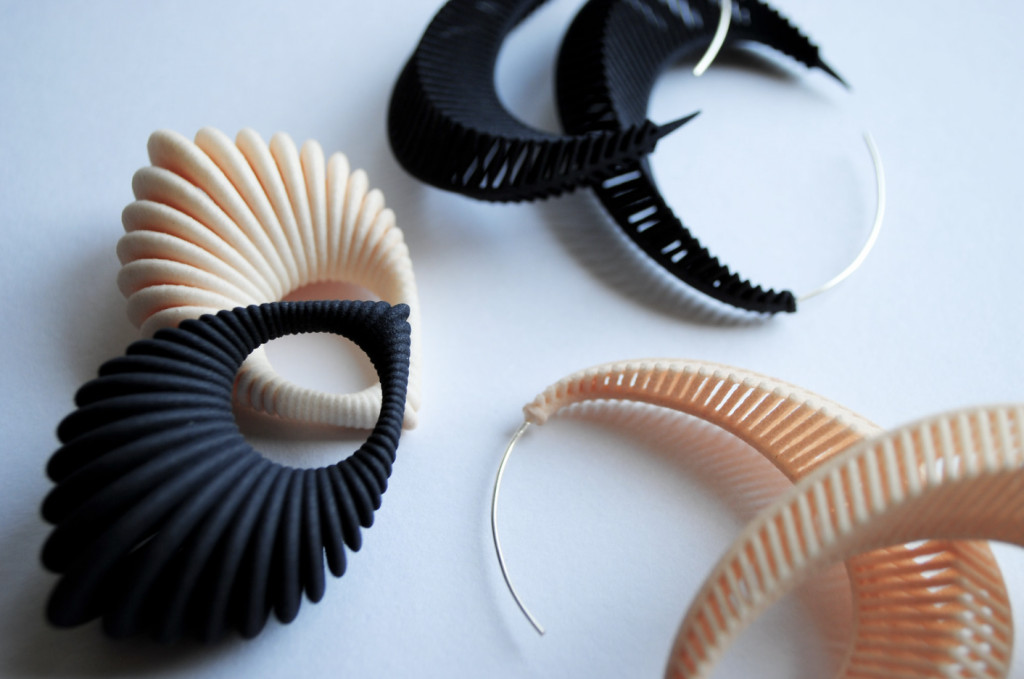
LO-3: Computational Fabrication
The work “Intersections” by the Bengler team really stuck out to me. The project aimed to create laser sintered sculptures that depicted the map of Oslo, Norway. In one of the maps, they focused on the roads and on the other they took a look at how the map intersected with income statistics. I found it extremely beautiful with the black and white contrast between the map and the ground. It seems so delicate and intricate which just adds to how visually appealing it is. You can tell that the team who worked on this project have artistic tendencies that lean towards simplicity in broad form, but intricacy in details. The website says that they used laser sintered technology to produce this piece. From just googling the process, it seems to be an additive process that binds a material to create a form. I think the algorithm would probably tell the laser at what points to add pieces or bind them together.
Creator: Bengler Team
Title: “Intersections”
http://bengler.no/intersections
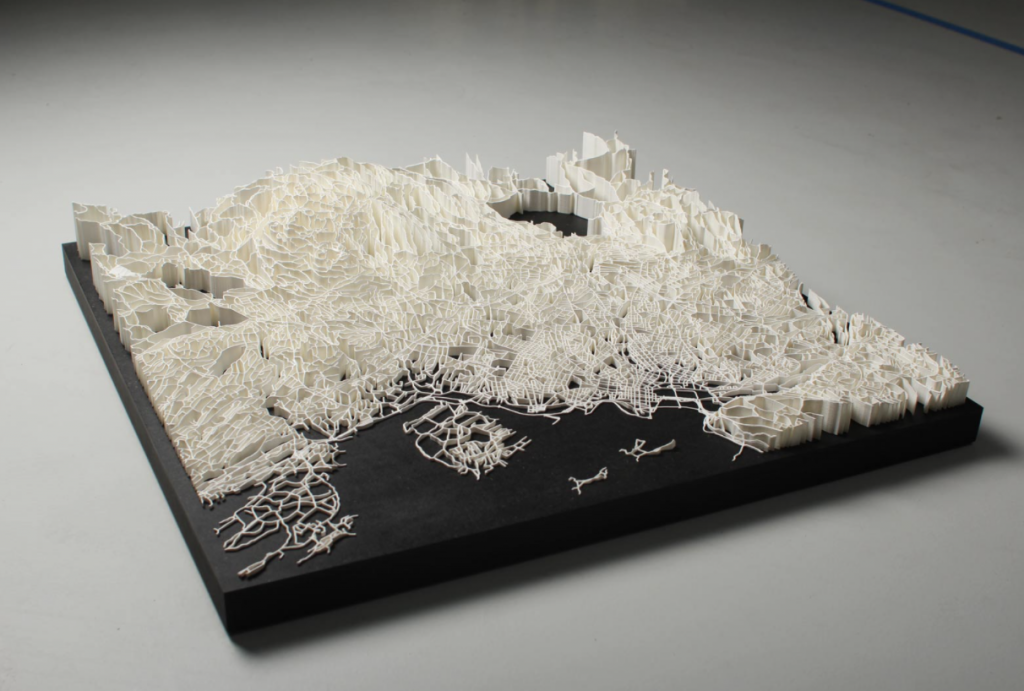
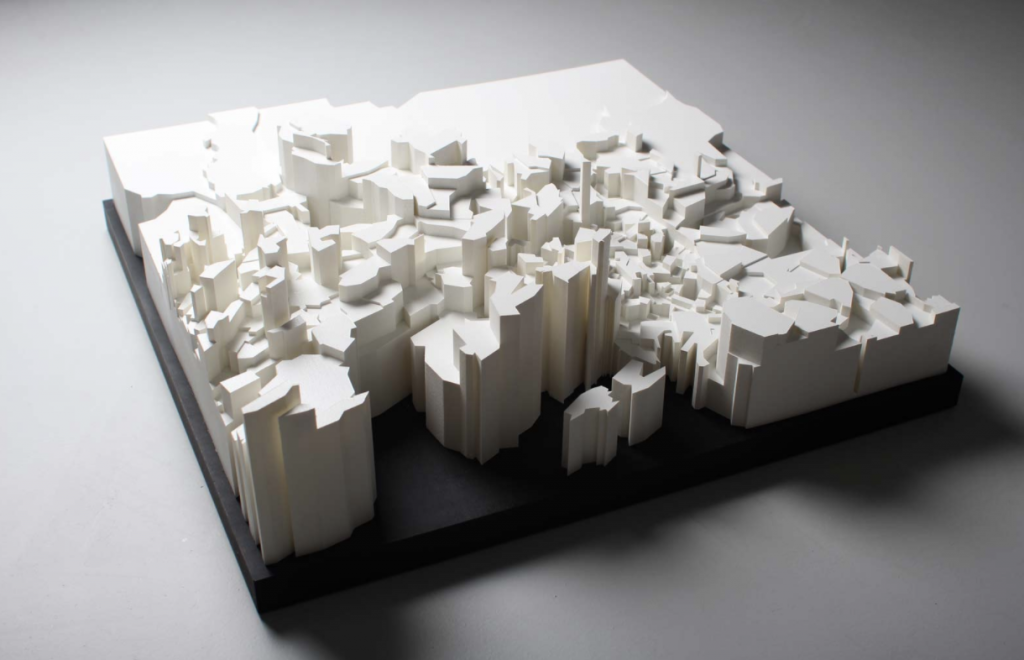
LO3: 3D Generative Designs
John Henley; 15-104 section D.
One of my biggest areas of interest in the world industrial design is biophilic design, or designs based off the natural world. A project that combines both generative design and biophilic design that I admire is the Airbus A320 bionic-partition. In 2016, Airbus developed algorithms based on the growth patterns of slime mold to create a new partition dividing the galley from the passenger cabin. The design mimics the single-cell organism’s organic cellular growing structure to create a material that is significantly lighter weight than the previous design. This new design reduces the weight by 55% due to the use of empty spaces evident between cells. In turn, because the aircraft is significantly lighter weight, Airbus claims it can save 465,000 metric tons of CO2 emissions per year. This new design approach is the future–using organic, biophilic-inspired designs in tandem with computer generated production to make the artificial world more efficient and sustainable.
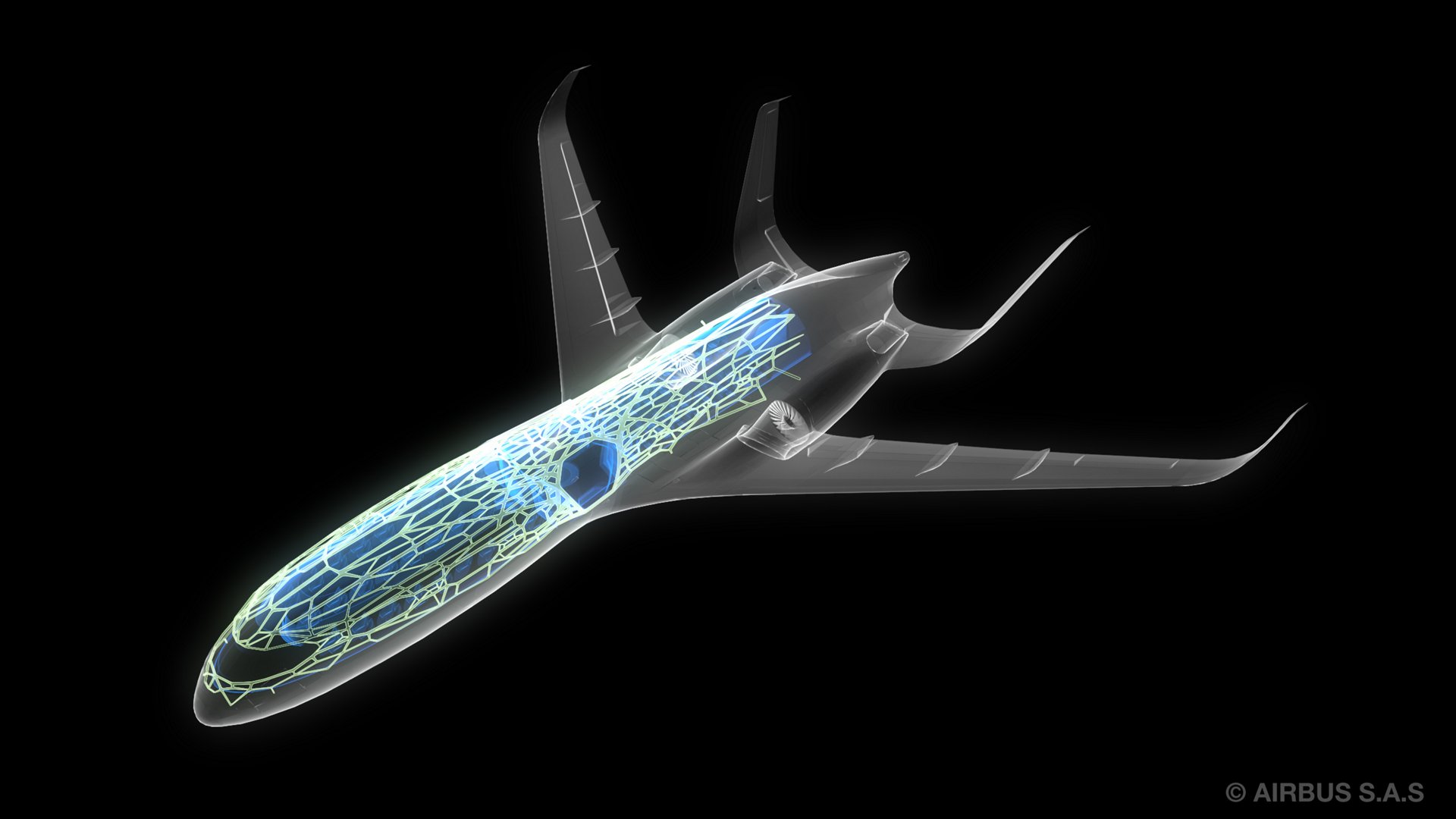
Link to work: Pioneering bionic 3D printing – Company – Airbus
Digital Fabrication – LO3
In the realm of digital fabrication there are many big cutting edge projects. However, many wonder how it can be helpful to everyday life. This is why I chose Para Clocks as the highlight of my blog post.
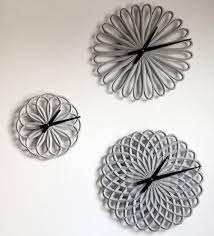
They are digital fabricated clocks made out of concrete that are created using parametric software. It seems that because they used a program to make their clocks, they were able to make these intricate patterns that are mathematically perfect. I think it’s very interesting how you can use coding to make artwork and everyday objects have a pattern that is mathematically correct.
You can tell the creator is using symmetry and circular patterns to make these complex but simple clock designs. Its beauty is based off its intricacy and minimalism, which is why I really enjoy these clocks.
I think they also really reflect nature because often nature is complex, but also made in a way that there is mathematical order and symmetry, thus making these clocks so attractive because nature is always beautiful to humans.
Link:https://www.kickstarter.com/projects/224392735/para-clocks-project
![[OLD SEMESTER] 15-104 • Introduction to Computing for Creative Practice](../../wp-content/uploads/2023/09/stop-banner.png)